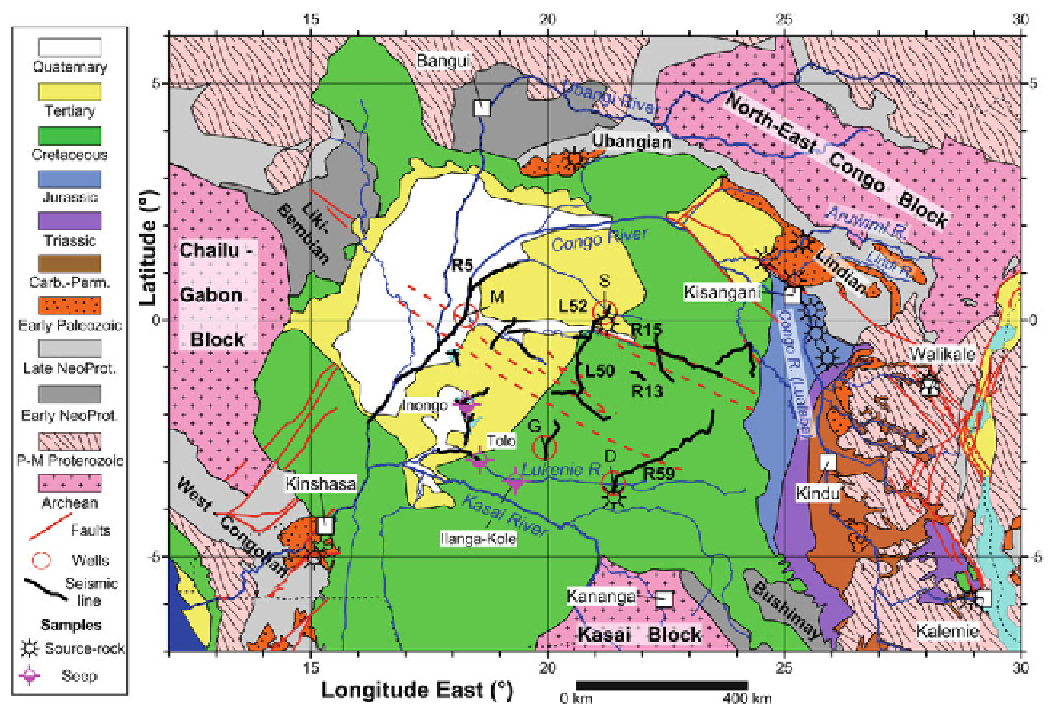Geology Reference
In-Depth Information
Fig. 18.1
Simplified geological map of the Congo Basin with location of the samples referred to in the text (geology modified from Lepersonne
1974
)
A second major exploration phase was conducted
between 1974 and 1976 by the Esso-Texaco consortium,
which acquired 2,900 km of reflection seismic profiles and
drilled two ca. 4,000 m-deep exploration wells (Mbandaka-1
and Gilson-1). The results of this exploration are synthesized
in the Hydrocarbon Potential of the Cuvette Centrale Report
(ECL
1988
) and further discussed in Lawrence and Makazu
(
1988
) and Daly et al. (
1992
). Unfortunately, most of the
detailed results are unpublished. The two exploration wells
proved negative with respect to oil potential, but provided
valuable stratigraphic and rock information as well as well-
logs. Both wells have a dominant siliciclastic lithology,
including good potential reservoir rocks (e.g. abundant
aeolian sandstone units) but encountered no hydrocarbon
shows. A bitumen residue was found in black-grey shales
and siltstones of the Mbandaka-1 well between depths of
2,810-3,425 m. This well was drilled almost entirely in red
sandstones and conglomerates (ESSO Zaire
1981a
). It
encountered Neoproterozoic carbonates at 4,133 m deep
and bottomed in evaporate and probable halite salt at
4,350 m. Due to its dominantly clastic nature and near
absence of microfossil remains, age constraints are scarce
(for detailed biostratigraphy, see Colin
1981
; Linol
2013
,
who describes abundant ostracods), and stratigraphic corre-
lations with the other wells and outcrops are difficult. Only a
few layers of black shales were encountered, but with negli-
gible source-rock potential. Similarly, the Gilson-1 well
encountered no source rock, potential seals or hydrocarbon
shows (ESSO Zaire
1981b
). It has also a dominant clastic
lithology of continental origin and Neoproterozoic carbo-
nates at the base, suggesting restricted marine to lagoon
this
Topic for detailed descriptions of
the Neoproterozoic
carbonates).
The last oil exploration-phase was completed in 1984
by the Japan National Oil Corporation (JNOC), including
aeromagnetic and gravity surveys with source rock investi-
gations (JNOC
1984
). It concentrated along the eastern rim
of the CB, where the Middle Cretaceous Loia and the Upper
Jurassic Stanleyville Groups are outcropping. Several source
rock horizons have been identified in outcrops and in bore-
holes. Where sampled, the most promising ones are not
within the oil maturation window, but they may have gene-
rated hydrocarbons in deeper parts of the basin (Sachse et al.
2012
).

Search WWH ::

Custom Search